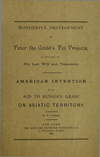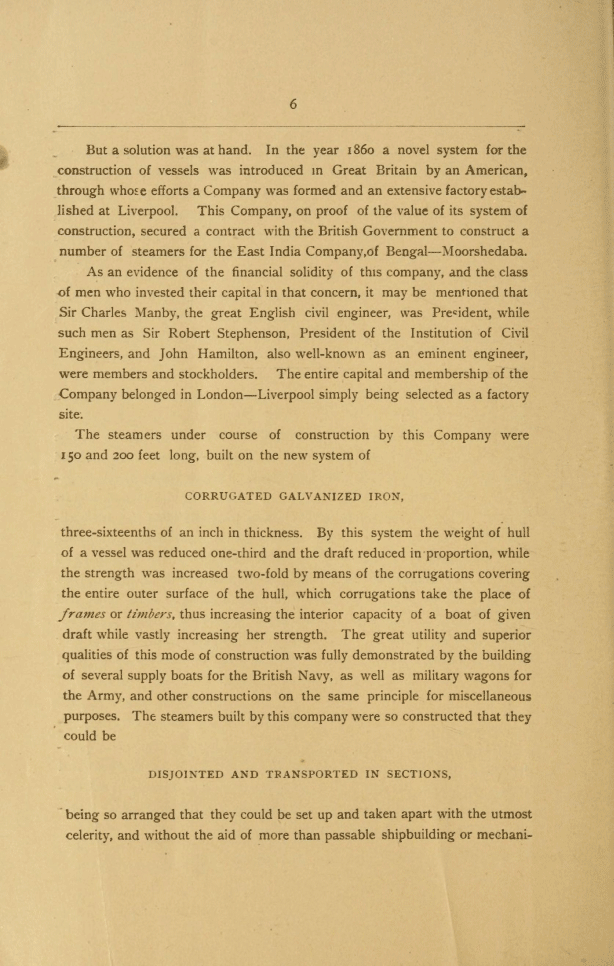
Page 6: of Maritime Reporter Magazine (January 1889)
Read this page in Pdf, Flash or Html5 edition of January 1889 Maritime Reporter Magazine
6
But a solution was at hand. In the year i860 a novel system for the construction of vessels was introduced in Great Britain by an American, through whose efforts a Company was formed and an extensive factory estab- lished at Liverpool. This Company, on proof of the value of its system of construction, secured a contract with the British Government to construct a number of steamers for the East India Company,of Bengal—Moorshedaba.
As an evidence of the financial solidity of this company, and the class of men who invested their capital in that concern, it may be mentioned that
Sir Charles Manby, the great English civil engineer, was President, while such men as Sir Robert Stephenson, President of the Institution of Civil
Engineers, and John Hamilton, also well-known as an eminent engineer, were members and stockholders. The entire capital and membership of the
Company belonged in London—Liverpool simply being selected as a factory site.
The steamers under course of construction by this Company were 150 and 200 feet long, built on the new system of
CORRUGATED GALVANIZED IRON, three-sixteenths of an inch in thickness. By this system the weight of hull of a vessel was reduced one-ihird and the draft reduced in proportion, while the strength was increased two-fold by means of the corrugations covering the entire outer surface of the hull, which corrugations take the place of frames or timbers, thus increasing the interior capacity of a boat of given draft while vastly increasing her strength. The great utility and superior qualities of this mode of construction was fully demonstrated by the building of several supply boats for the British Navy, as well as military wagons for the Army, and other constructions on the same principle for miscellaneous purposes. The steamers built by this company were so constructed that they could be
DISJOINTED AND TRANSPORTED IN SECTIONS, being so arranged that they could be set up and taken apart with the utmost celerity, and without the aid of more than passable shipbuilding or mechani-

 5
5

 7
7
